How I Got Started
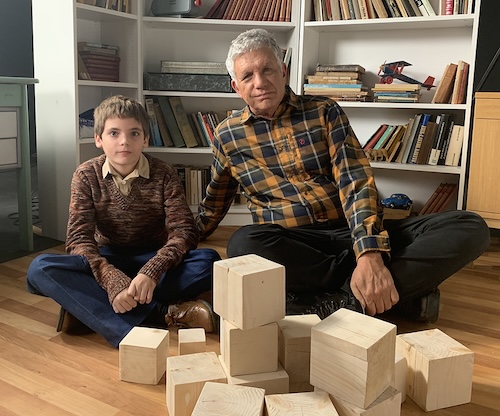
Samu Bagi, the actor who plays Tom Weidlinger at age twelve, and the filmmaker on the set of The Restless Hungarian, Budapest 2019.
I was fifteen years old when Tom Snell, one of my high school teachers, lent me his 8mm home movie camera. I took it everywhere. I surreptitiously filmed people in New York’s subways. I made a friend climb all over an abandoned locomotive while I filmed him. I was a shy boy. Getting to look at the world through a tiny lens gave me a sense of both protection and grounding.
At seventeen I was a student at Portland State University in Oregon. I was mostly interested in the few available classes in documentary film. Robert Flaherty’s Nanook of The North about an Eskimo Family, Basil Wright’s 1936 film Night Mail fascinated me. The latter was a pean to the British Post Office’s mail trains with narration by poet W.H. Auden. I loved Dutch filmmaker Joris Iven’s silent visual poems Rain and Bridge. Never before had I seen films that focused on the beauty of ordinary things.
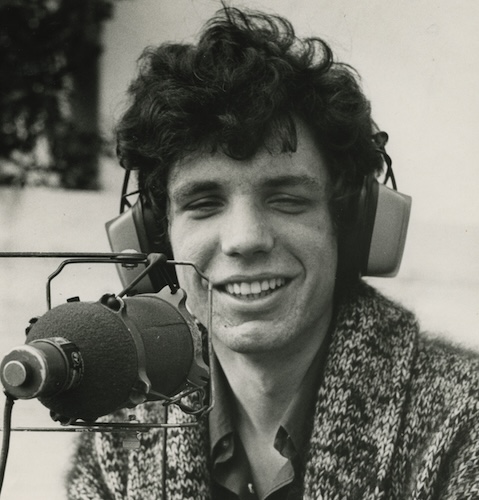
Film Student at AFI, 1976
Inspired by the humanistic approach to documentaries taught by my professors Thomas Taylor and Andries Dienum, I made a film about Quaker pacifists during the Vietnam war. I often attended Quaker meetings and was drawn to the faces of Quakers in silent meeting for worship. I gained acceptance from the Friends to bring my camera into their sacred space.
Except for film classes, college bored me. I dropped out and got a job as an apprentice carpenter but was unable to let go of my yearning to make films. Even though I knew it would be hard to make a living making documentaries I applied to be The Center for Advanced Film Studies at the American Film Institute. It was completely unrealistic because I had no bachelor’s degree. Amazingly I was accepted on the basis of my film about the Quakers, A Meeting of Friends.
Located in the opulent Beverly Hills Greystone mansion with its sweeping marble staircases, topiary hedges, and grand salons, AFI was a heady experience. Most classmates had matriculated from top film schools, like NYU, UCLA or USC, or had come from abroad. I was the youngest, still scarred by teenage acne.
Even though my first interest was documentaries I fully embraced AFI’s curriculum that focused squarely on narrative dramatic filmmaking, this because I understood that both genres depended on storytelling with a dramatic arc. In Screenwriting a tribunal of three professors routinely shredded our work in front of the entire class. Yet we learned.
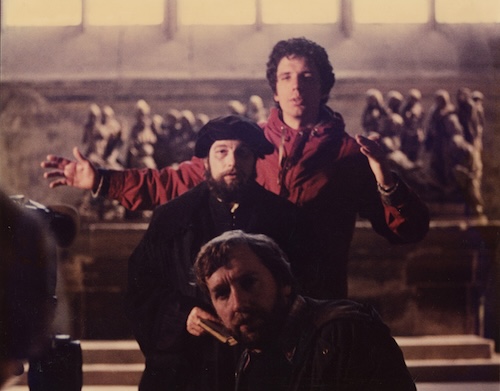
Directing a scene from Cosmos Kepler re-creation. 1977, Prague.
Every couple of weeks a famous guest director, writer or actor would come. We’d watch three or four of their films in the mansion’s rococo movie theater and then we’d have the opportunity to ask questions. My hero was the Swedish director Ingmar Bergman. It was his first time in Hollywood and It was a very big deal at AFI but I worried that when I saw him in the flesh I’d be horribly disillusioned, as I had been with several others.
When the day finally came a small, rumpled man in an immense wooly sweater walked on stage. My classmates asked detailed, esoteric questions. What was the focal length of the lens used for the scene of the knight playing chess with death in the Seventh Seal? What did red symbolize in Cries and Whispers? I kept silent.
Bergman answered some questions, then abruptly stopped. He said, “The most important thing I can say is this: If you believe in a story you want to tell and you are faithful to that story in your film, you may not become rich or famous but the journey will have been worth it. On the other hand, if you have nothing to say but just want to be a filmmaker you should not be sitting here.”
I felt an immense wave of relief. Thank you, my hero. His words have been a beacon throughout my entire career.
I got my first job, thanks to a recommendation from AFI’s Dean of Faculty, as an associate producer and director of historical re-creations for Cosmos, the PBS astronomy series with Carl Sagan. My boss was memorable. Adrien Malone, the Series Executive Producer, was a Brit who spoke with an upper-class Oxbridge accent, but described himself as Liverpool streetfighter raised by Jesuits. He was impulsive and prone to thunderous rages. He became my mentor. Somehow, he had confidence in me and he gave me confidence in myself. I wrote scripts for dramatic historical re-creations on Johannes Kepler, the 17th century astronomer and Champollion, the Frenchman who decoded the Rosetta Stone.
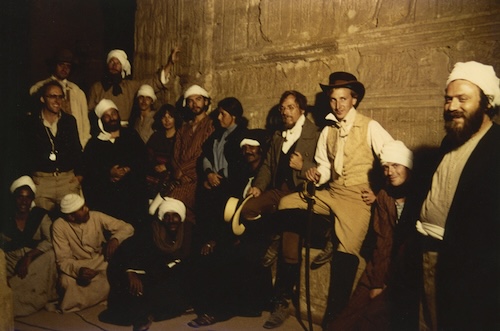
Extras and crew during the shooting of Champollion’s expedition at the temple of Dendera, Egypt, 1976.
Over the period of one year I boarded planes to Paris, Cairo, Prague, Berlin, Athens, Vienna, Sicily, and the Greek island of Samos carrying a briefcase my scripts and tens of thousands of dollars in American Express travelers checks. I scouted, produced and directed shoots with extras and actors in a startling variety of roles.
I worked with seasoned crews who knew a hell of a lot more about production than I did. I was always afraid of screwing up, getting fired at the height of one of Adrien’s tantrums and snuffing out my budding career. But it was Sagan who tried to fire me. In Egypt I shot a recreation of Champollion’s voyage down the Nile based on his 1830’s journal. For one scene I hired a belly dancer to perform on the deck of Champollion’s boat, based on his description. Sagan’s girlfriend was horrified that her man might be in a TV show with a belly dancer. I had to pay. Fortunately Adrien backed me up, but the lovely belly dancer scene wound up on the cutting room floor.
Pat Perini, head of production at WETA, the PBS station in Dallas, liked what I had done in Cosmos and convinced the executive producer of The West of The Imagination to hire me to direct four episodes. We had huge crews and a panoply of cowboys, Indians, explorers, soldiers, gold miners, con men, photographers, and artists. I gained confidence, shooting recreations in most states west of the Mississippi.
Cosmos and The West of The Imagination are dated. They were made in Public Television’s golden era of big-budget mansplaining, when white men like Sagan, Jacob Bronowski, John Kenneth Galbraith, Alistair Cooke stood in front of the camara and explained the meaning of everything. Notwithstanding, I cut my teeth on those shows, and learned a great deal about television.
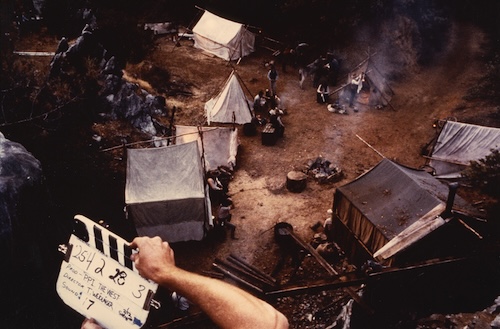
Recreation of a gold miners camp during the 1849 California gold rush. Columbia, California, 1984.
I’d been working for about ten years when I hit a long scary stretch without any work. So, I went on a cross-county road trip to introduce myself to producers of public television programming. I met people at the PBS stations in San Francisco, Portland, Seattle, Minneapolis, Pittsburgh Washington, and New York. No one seemed interested in what I had to offer until I came to Boston, the last stop on my itinerary. At WGBH, I met Judy Crichton, the Executive Producer of a brand new series on PBS, The American Experience. She hired me to make the film that was chosen to premiere the first season, The Great San Francisco Earthquake, 1906. One of the first women to produce in-depth news specials for CBS, Judy was my second mentor. She taught me how to be a journalist working with primary sources, especially historical archive film footage and photographs.
Thirty six years have passed since then. During that time I developed my voice as an independent filmmaker in sixteen more films. There’s a story behind each film – a stories that I wrote down in my journals over the years. I haven’t looked at those journals since they were written, but I am excited now to delve into them. In this website’s blog I will draw on those stories to put each film in both a personal and historical context.
Enjoy.